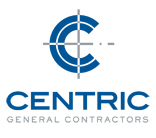Agree or disagree?
Effective team collaboration ensures a project’s success.
Of course, you agree! But, what is effective collaboration? While it may seem obvious to you, it may not be apparent to everyone. You may take it for granted that each project team member understands they have equally important role and his or her contribution is necessary for a successful project. It may also be obvious that effective collaboration aims to build goodwill and trust am
ong all members. But, is your team knowledgeable or informed on the specific practices that encourage collaboration?

This post discusses 5 practices that consistently take place when a project team is successfully working with one another. Team members:
1. Demonstrate commitment. Simply being present demonstrates commitment. When each member is present and ready to work, they demonstrate commitment. Commitment is contagious and inspires others to unify toward meeting a common goal, i.e. delivering a successful project.
2. Come prepared. Whether you are participating in a project activity or a group meeting, be prepared. You should be ready to work together with your project team and not be a passive participant. Look at each occasion as an opportunity to get to know your team members better.
3. Actively Listen. Sit back and listen actively to absorb different points of view. Don’t debate or argue – just consider the ideas. Pausing to listen first then speak will allow for a more meaningful exchange. Expect to receive a little criticism once and awhile – don’t get defensive. This is an opportunity for the team to solve a problem or challenge together. An effective exchange of active listening and responding can provide numerous results.
4. Participate and exchange ideas. A successful project encourages your participation and thoughts on project’s approach, delivery and performance. From project commencement, there should be an even exchange of ideas. A great project needs to adopt a positive environment of open expression where you and your teammates feel free to communicate openly. When you function as an active team player, you are there to make things happen. Ask yourself “What can I do to help the team and achieve project success?”
5. Overcome challenges together with flexibility. As discussed earlier, active listening, gaining a complete understanding of the challenge at hand and then responding are steps toward overcoming difficult project challenges together. For sake of conversation, let’s assume your team discovers an unforeseen project situation. This not a time to get stressed out – this is an opportunity to adapt to the new project reality and work together with the team to develop a new approach. In effect, be flexible so that you and your team can make forward progress and ensure continued success.
6. Hold each other accountable. Holding each other accountable signifies respect and demonstrates that the team has high expectations of each other. In a project environment where open expression is encouraged, everyone’s performance is out in the open. The team will collectively know how each member is contributing to the project’s success. This knowledge should also include a dialog that incorporates support, encouragement and assistance. When the team is accountable to one another, they tend to strive to a greater level of performance.
When you look beyond your own project role and care about the greater team, you will have a more rewarding experience knowing that you contributed to the project’s success. Celebrating success together as a team is a great motivator for continued performance.
What was your best project experience? Did your team effectively collaborate with one another? Share your story with us in the comments section. If you have a story that others can learn from, we will publish your story on our blog.
